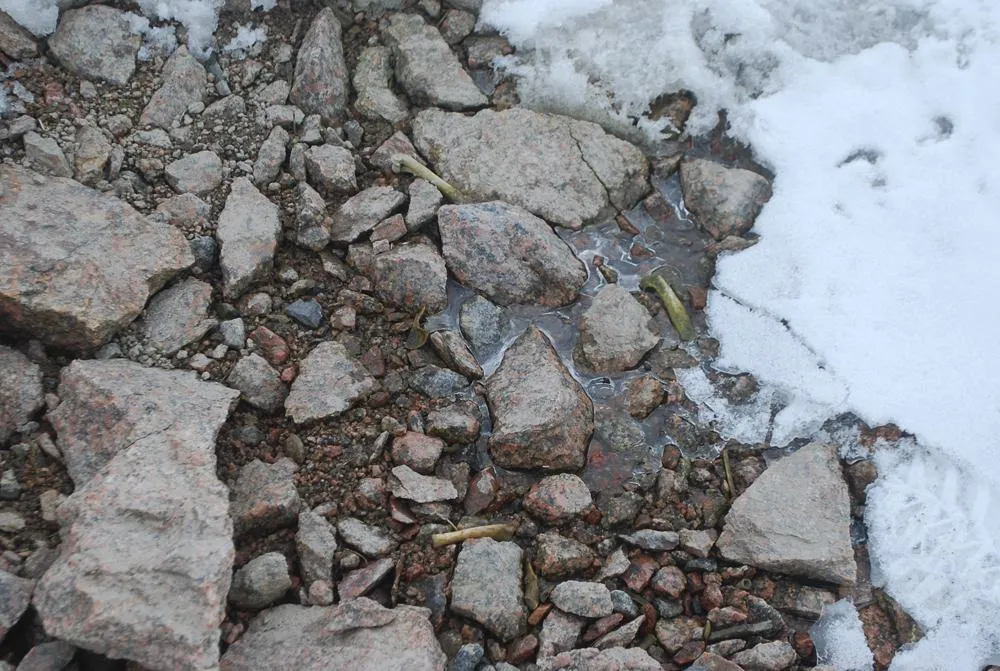Scientist Unearths a Colony of Mummified Penguins in Antarctica
Melting ice revealed an ancient colony that has never before been recorded
/https://tf-cmsv2-smithsonianmag-media.s3.amazonaws.com/filer/4d/4d/4d4d92ad-1023-4bd7-94db-3f6f024b1362/penguin_mummy.jpg)
While out exploring along the coast of Antarctica’s Ross Sea in 2016, ornithologist Steven Emslie made an unexpected discovery when he stumbled upon the corpses of what seemed to be newly dead penguins alongside older, mummified remains, reports Matt Kaplan for the New York Times.
“In all the years I have been doing this research in Antarctica, I've never seen a site quite like this,” Emslie says in a press release.
Emslie was studying penguin colonies in Antarctica when he heard a rumor about guano—a term reserved for bat and seabird poop—stains on a rocky outcrop near the shore. But no active colonies have ever been recorded there, even by early Antarctic explorers. Curious, Emslie set out to investigate.
When he arrived at the rumored site, he found pebbles upon pebbles scattered across the ground and white, splotchy guano stains on the ice, reports Harry Cockburn for The Independent. Then, he found the corpses.
They bodies were of Adélie penguins, a species that lives alongside Antarctica’s coastline and uses pebbles to build nests. Most of the corpses were chicks, which have a slim chance of surviving to adulthood. Some of the remains looked like fresh, newly dead penguins with their feathers and flesh still intact, but other corpses were old and mummified. He excavated some of the remains and took them back to his lab for radiocarbon analysis, which would determine how old the corpses actually were.
“We excavated into three of these mounds, using methods similar to archaeologists, to recover preserved tissues of penguin bone, feather, and eggshell,” Emslie says in the press release. “Overall, our sampling recovered a mixture of old and what appeared to be recent penguin remains.”

Emslie’s analysis revealed that some of the remains were nearly 800 years old and other were as ancient as 5,000 years old. He immediately realized that the corpses weren’t actually new—they were actually frozen in time and preserved under layers of ice, he tells the New York Times. Due to the warming climate, the ice preserving the penguin corpses melted away and revealed this new, ancient colony.
In September, Emslie published his findings in the journal Geology. His analysis revealed that there have been three waves of penguin occupation at this site, reports The Independent. The first was from 2,750 to 5,145 years ago, the second from 1,375 to 2,340 years ago, and the last from 800 to 1,100 years ago—but what wiped out that last colony?
Emslie speculates that the penguins abandoned their colony in the 1300s during the onset of the Little Ice Age, which shrouded the area in snow and ice and likely blocked the penguins’ access to the ocean. It’s “the best explanation for the jumble of penguin remains of different ages that we found there,” he says in the press release.
Rising temperatures and melting ice may unearth more clues of Antarctica’s past in the future and “add to the dynamic record of penguin occupation and abandonment over millennia with climate change," Emslie tells the New York Times.
Despite being an abandoned colony now, the site has access to the ocean and an abundance of pebbles, making it a prime spot for future colonies to settle in, David Ainley, a penguin ecologist at the ecology consulting firm H.T. Harvey & Associates, tells The New York Times.
“We’ve seen that Adélies will roam the coast in small flocks and, if they find a promising-looking site like this one, they will make it their home,” Ainley says.
/https://tf-cmsv2-smithsonianmag-media.s3.amazonaws.com/accounts/headshot/rasha.png)
/https://tf-cmsv2-smithsonianmag-media.s3.amazonaws.com/accounts/headshot/rasha.png)